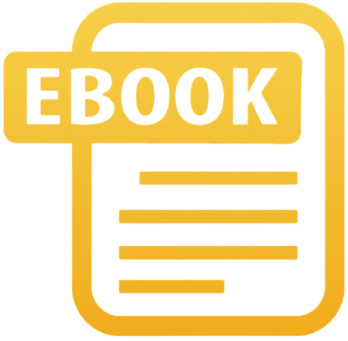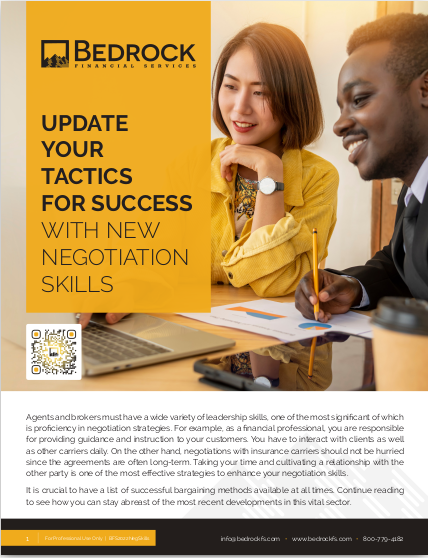Key Takeaways
-
You can shorten the time it takes to build trust with prospects by shifting the focus from information to emotional alignment.
-
Small, repeatable actions like showing consistency, using social proof, and owning imperfections create a faster trust ramp.
Trust Is a Process, But Speed Matters
As an independent insurance agent, you already know trust is everything. No one hands over personal financial decisions to someone they don’t feel good about. But here’s the challenge: trust typically takes time—sometimes weeks, sometimes months. In the insurance world, you don’t always have that luxury. You have limited touchpoints, and every moment with a prospect matters.
The good news? While trust isn’t instant, there are ways to accelerate it without cutting corners. Trust has rules, and once you understand them, you can start applying them strategically.
Let’s break down how to do that.
Start with Emotional Resonance
People don’t trust facts first. They trust feelings.
If you jump into your services, licenses, or plan features in the first interaction, you might lose your audience. Instead, build emotional alignment.
Use language that reflects their stage of mind
Don’t just assume your prospect is ready to make a decision. Maybe they just got confused after a Medicare seminar. Maybe they’re worried about making a mistake. Use phrases that reflect this:
-
“You might be wondering if you’re choosing the right plan, and that’s a fair question.”
-
“A lot of people we work with were overwhelmed at first too.”
This kind of language validates their hesitation and makes them feel seen—a major step toward trust.
Mirror their tone
If your client sounds cautious, don’t bulldoze them with excitement. If they’re energetic, don’t weigh them down with dry facts. Your energy should meet them where they are.
Consistency Beats Perfection
Being impressive doesn’t create trust as fast as being consistent.
You build trust through what you always do—not what you occasionally do. In fact, perfection can make people suspicious. Clients are more likely to trust someone who is dependable, responsive, and human.
Show up the same way every time
From the first email to your voice on the phone to how you show up on Zoom—consistency makes you predictable. And predictable people feel safe to trust.
Keep your timelines and promises
If you say you’ll call at 2 p.m., call at 2 p.m. If you say you’ll send a comparison sheet tomorrow, send it tomorrow. No delays. No excuses. Every on-time action becomes a deposit in the trust bank.
Make Social Proof Visible
Trust multiplies when others speak for you.
In 2025, it’s not enough to have a few reviews floating around on a directory. You need to make testimonials part of your sales process, not an afterthought.
Show testimonials early and often
Don’t wait until the end of your pitch to share them. Slide them into:
-
Your introductory emails
-
Your booking confirmation messages
-
Your calendar invites
Curate stories that reflect the client’s experience
It’s not about quantity. It’s about relevance. For every client profile, keep 2–3 short stories from people who had the same objections or worries.
Use formats like:
-
“She wasn’t sure whether to keep her employer coverage or switch. After we talked it through…”
-
“He thought working with a local agent was enough until he realized…”
These story arcs are powerful because they reflect internal change—a key trust builder.
Be Transparent About Limitations
You might think trust only grows when you appear flawless. But in reality, transparency creates a shortcut to trust.
Say “I don’t know” when necessary
If there’s a benefit detail or underwriting rule you’re not 100% sure about, say:
-
“Let me double-check that for you”
-
“I want to make sure I’m giving you the most accurate info”
Owning gaps builds credibility. It proves you value accuracy over ego.
Don’t pretend everything is easy
Sometimes, an application will take 45 minutes. Or a prescription lookup might be tricky. Instead of glossing over it, say:
-
“This next part is a bit technical, but I’ll walk you through it step by step.”
-
“This might take a few more minutes, but it’s worth getting it right.”
Honesty disarms doubt.
Use the “Next Best Step” Framework
A client who doesn’t know what happens next can’t fully trust you.
Even if you’ve explained everything perfectly, your prospect is still asking themselves: What do I do now?
You need to eliminate that uncertainty by always offering a clear, low-pressure next step.
Define one next step, not multiple
Don’t overwhelm them with options. Say:
-
“I’ll send you a short recap and the comparison tool. We can review it together Friday at 3 or Monday at 11. Which works better?”
This shows you’re not rushing them—but you’re also not leaving them stranded.
Set expectations for timelines
Say things like:
-
“You’ll get an email from me within the hour.”
-
“It usually takes 2–3 business days to process this part.”
When people know what’s coming, they relax. And when they’re relaxed, they trust.
Trust Takes Repetition, Not Just Persuasion
One powerful truth about trust? It’s not a one-time win. It’s a repeated experience.
You’re not just trying to be trusted today. You’re trying to become someone people stay loyal to. That means trust must show up in every stage:
-
In your follow-ups
-
In how you handle questions
-
In your tone after the sale
Use a 3-touch reinforcement strategy
Once a new client comes on board, build trust after the sale with:
-
A “welcome” message (within 24 hours)
-
A check-in message (within 7 days)
-
A benefit review (within 30–45 days)
Each touchpoint reaffirms the decision they made to work with you.
Don’t disappear after the signature
This is where many agents lose long-term trust. Don’t vanish once the paperwork is in. Create a short timeline with scheduled check-ins, so clients always feel like you’re nearby.
Leverage Time Compression Strategies
Even though trust takes time, you can compress that time with intentional actions.
Here are ways to do that:
Collapse the “get to know you” window
Instead of starting cold, send a short video intro after your prospect books a call. Say who you are, what to expect, and that you’re looking forward to it. A 90-second clip can replace 15 minutes of small talk.
Use visual aids to shorten understanding
Graphs, charts, and timelines are trust accelerators. When people see clarity, they feel competence. Create a few go-to visual assets to explain common questions visually.
Why This Approach Works in 2025
Clients in 2025 are more skeptical, more research-driven, and more independent than ever. They want:
-
Fast clarity
-
Emotional safety
-
Proof before praise
And if you can deliver those things in the first 3–4 interactions, you gain what others only earn in 3–4 months.
This approach isn’t about cutting corners. It’s about building smarter corners.
You’re not asking people to take a leap of faith. You’re building a bridge.
And when that bridge feels solid, people cross it faster.
Build Trust Faster With the Right Support
Trust-building isn’t just about you—it’s about the systems around you. At Bedrock Financial Services, we help independent agents like you create credibility, consistency, and connection in every step of your client journey.
From training and automation to CRM tools and marketing support, our solutions are designed to make trust easier to earn and quicker to grow. You don’t have to start from scratch every time.
Sign up with Bedrock Financial Services and let’s start building stronger, faster trust together.







